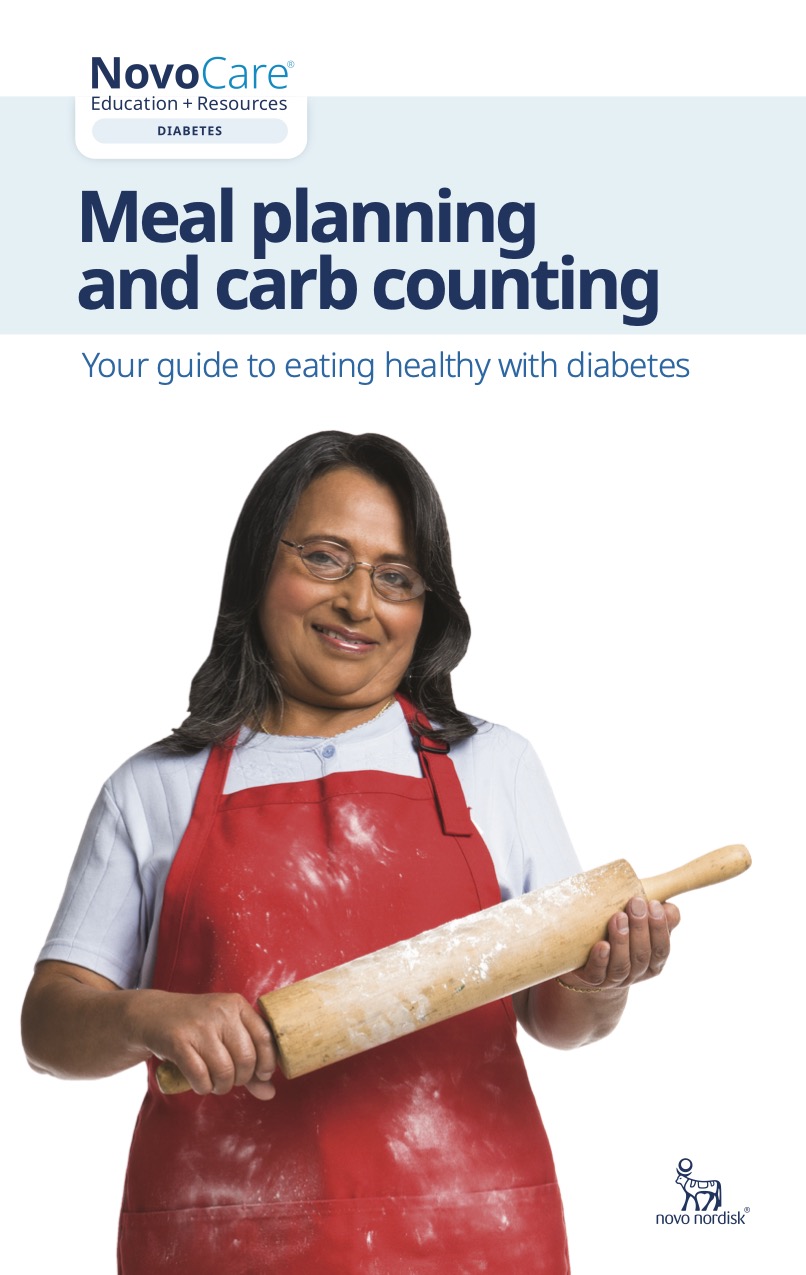
EATING
A little more of this, a little less of that

Find out how small diet adjustments can make a big difference for someone with diabetes.
What’s the difference between eating healthy when you have diabetes and eating healthy when you don’t? Not much! Having diabetes doesn’t mean having to say “no” to everything with glucose or to avoid dessert entirely. But you may need to eat a variety of foods and a balanced amount of carbohydratesCarbohydrateCarbohydrates are the main kinds of food that raise blood glucose levels. Your digestive system changes carbohydrates into glucose, and then uses this glucose as a source of energy for your cells.
There are 3 main types of carbohydrates in food: starches (complex carbohydrates), sugars (simple carbohydrates), and fiber. Fiber is the part of plant foods, including fruits, vegetables, and nuts, that you can’t digest., proteins, and fats.
So why does eating right matter so much?
Eating healthy foods can help you:

- Improve your overall health
Healthy eating as part of your overall diabetes management plan can help keep your blood glucoseBlood glucoseThe main sugar found in the blood, and the body’s main source of energy. within your target range. It can also help lower your cardiovascular risk.

- Avoid high and low blood glucose levels
Following a meal plan that makes sure you get the right food groups in the right amounts can help manage blood glucose levels.

- Maintain a healthy weight
Ask your doctor about a healthy range for your weight. Working toward this goal can also help you manage your blood glucose.
What does a healthy diet actually look like?
There’s no “one-size-fits-all” diet for people with diabetes. Creating a healthy meal plan starts by learning more about foods and how they affect your blood glucose. That will help you create a plan that not only fits your personal tastes, but also may help control blood glucose levels.

- Fruits
Fruits are healthy and tasty—but they’re also full of carbs. It’s important to count your servings as part of your meal plan.
- Vegetables
There are 2 main types of vegetables: starchy and non-starchy. Non-starchy vegetables have fewer carbs, which may make them a good choice for your meal plan.
- Proteins
You can find proteins in meats, cheeses, and eggs. But you can also try nuts, tofu, and legumes for vegetarian options.
You’ve got this!
Sounds complicated? Don’t worry, it just takes a little practice. Start adding fruits and vegetables every day, and eating less glucose. Keep an eye on food labels too—especially on low-fat and fat-free dairy products. Their glucose content can be more than you think.
Then, why not try out some easy-to-make recipes? You’ll find your healthy eating plan can include a lot of the foods you love, simply made in new ways. And remember, your diabetes care teamDiabetes care teamYour diabetes care team may include a primary care doctor, a diabetes and hormone doctor (endocrinologist), a registered nurse, a diabetes educator, a dietitian, a heart doctor (cardiologist), a foot doctor (podiatrist), an eye doctor (ophthalmologist/optometrist), a kidney doctor (nephrologist), a dentist, a pharmacist, and a mental health professional. is there to help you. If you have questions, be sure to ask them.
Test your knowledge
To be healthier with diabetes, you should be a vegetarian.
Correct!
Sorry, that's incorrect.
While eating more vegetables is one great way to eat healthier, it’s not the only way. You can talk to your care team about what is right for you.



